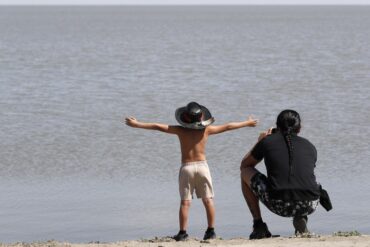Welcome to the Wonderful World of Aussie Wildlife!
G’day, mate! Are you ready to take an incredible journey to explore the unique and exciting wildlife of Australia? Whether you’re an Aussie local or planning a family trip down under, this ultimate guide is here to help parents and curious kids learn all about Australia’s captivating creatures. So, grab your binoculars and your sense of adventure as we dive into the magical world of Australian animals!
Why Australian Animals Are Unique
Australia boasts some of the most distinctive animals on the planet. Thanks to millions of years of isolation, Australian wildlife has evolved in fascinating ways. From hopping kangaroos to the secretive platypus, the variety of creatures found here is simply astounding!
- Kangaroos: Discover these iconic marsupials that call Australia home.
- Koalas: Learn all about these cuddly tree-dwellers with their love for eucalyptus leaves.
- Echidnas: Find out about these spiny anteaters that share a rare trait with the platypus.
- Tasmanian Devils: Explore the fascinating world of this spirited and feisty marsupial.
Kid-Friendly Facts About Australia’s Wildlife
Did you know that the koala’s diet of eucalyptus leaves provides very little energy, which is why they need to sleep for up to 22 hours a day? Or that the kangaroo can leap up to 3 times its own height? These are just a couple of awesome tidbits that showcase how extraordinary Aussie animals are!
How to Safely Observe Australian Animals
Observing Australian wildlife can be a thrilling experience for both parents and children. It’s crucial to remember, though, that these animals are wild and should be treated with the respect they deserve. Here’s how you can enjoy watching these creatures while ensuring their safety and yours:
- Keep a Safe Distance: Always give animals enough space, especially when they’re with their young.
- Do Not Feed Wildlife: Human food can harm animals, so resist the urge to feed them.
- Spot Wildlife with a Guide: Local guides can provide a wealth of knowledge and a safer viewing experience.
Understanding and respecting these guidelines ensures that your wildlife encounters will be memorable and responsible adventures.
Activities for Kids: Learning Through Fun
Engaging kids with educational activities is a great way to cultivate their interest in wildlife. We’ve put together some interactive and fun ideas that are perfect for kids to learn about Australian animals:
- Animal Puzzles and Coloring Books: A creative way to learn about different species while developing motor skills.
- Nature Walks and Scavenger Hunts: Turn a walk in the park into an exciting treasure hunt for wildlife sightings.
- Wildlife Documentaries: Educational and entertaining, these films bring the animal kingdom into your living room.
Through these activities, your kids can form a deep and lasting appreciation for wildlife, while also having a blast!
Stay tuned as our vivid guide continues to explore the distinct habitats of Australia, uncover the secrets of nocturnal animals, and meet the critters of the coastal regions. You’re about to find out why Australia is one of the best places on earth to experience wildlife. Join us on this exciting adventure!
Quiz Time! Parents, want to make learning about Australian animals even more fun for your little ones? Ask them these questions:
- Can you name an Australian animal that starts with ‘E’?
- What is the name of the world’s largest coral reef located in Australia?
- How many hours does a koala usually sleep per day?
Answers to these questions and more await as we delve deeper into the animal kingdom on this enchanting continent. So, what are you waiting for? Let’s hop to it and continue our exploration of Australian wildlife!

5 Essential Things Parents Should Know When Preparing for Australian Animal Encounters
As you embark on this educational adventure with your little explorers, there are key things to keep in mind to make your Australian animal experience as enriching and safe as possible:
- Research the Animals: Before you set out to meet the Aussie animals, it’s important to learn about them. This not only builds excitement but also teaches children what to expect and how to behave around wildlife.
- Choose Kid-Friendly Locations: Select destinations that are known for being child-friendly. Places with easy trails, interactive exhibits, and educational programs make learning fun and accessible for kids.
- Prep for the Outdoors: Australia’s landscapes can be rugged and the weather, unpredictable. Make sure to pack sunscreen, hats, water, and snacks. Dress in layers and wear comfortable shoes suitable for walking.
- Discuss Safety Rules: Talk with your kids about the importance of not straying from paths, the reasons for quiet observation without disturbing animals, and the need to stay close to the group at all times.
- Encourage Respect for Nature: Instill a sense of respect for the environment by teaching kids to not litter, to observe animals without trying to touch them, and to appreciate the natural world in its undisturbed state.
Equipped with this knowledge and a respectful approach toward nature, both you and your children are all set for a delightful and educational experience with the unique Australian wildlife. Embrace the opportunity to learn and bond as a family. After all, the shared memories of these incredible animals in their natural habitat will be treasured for years to come.
Exploring the Distinct Habitats of Australia
When it comes to Australian animals, their habitats are as diverse as they are! From the arid outback to lush rainforests and vibrant coral reefs, each environment offers a different set of animals to discover:
- Arid Outback: Home to hardy species like the red kangaroo and the thorny devil lizard.
- Tropical Rainforests: Find the cassowary and tree kangaroos hidden among the foliage.
- Oceanic Marvels: The Great Barrier Reef and surrounding waters are a haven for sea turtles, tropical fish, and the fascinating dugong.
By visiting different habitats, your family can learn about the wide array of survival strategies animals employ and the ecological roles they play.
Meet the Nocturnal Natives
Australia is home to a mysterious nighttime world. When the sun sets, creatures like the Tasmanian devil, wombats, and various species of possums and gliders emerge. Here’s how you can spy these nocturnal natives:
- Guided Night Walks: Many wildlife parks and nature reserves offer nocturnal tours with experienced guides.
- Stay Quiet and Patient: Nocturnal animals can be shy, so staying still and silent can increase your chances of a sighting.
- Use a Red Light: If allowed, a red flashlight can help you see animals without startling them, as they are less sensitive to red light.
Exciting as it may be, remember that at night, you’re a guest in these animals’ home, so keep interactions to a minimum and let nature’s nocturnes come to you.
Coastal Critters and Where to Find Them
The Australian coast offers magical encounters with marine wildlife. From playful dolphins to majestic whales, the ocean teems with life. Beaches with rock pools can introduce your family to starfish, sea urchins, and crabs in their natural setting. Always supervise children near water and be sure to only observe marine life without touching or removing them from their homes.
Exploring Australia’s wildlife is a chance for families to connect with nature and each other. By following our tips and insights, parents can ensure that their children’s curiosity is rewarded with education and inspiration. So, let the adventure begin, and discover the enchanting world of Australian animals together!
For more great fun click here. For more information see here
Disclaimer
The articles available via our website provide general information only and we strongly urge readers to exercise caution and conduct their own thorough research and fact-checking. The information presented should not be taken as absolute truth, and, to the maximum extent permitted by law, we will not be held liable for any inaccuracies or errors in the content. It is essential for individuals to independently verify and validate the information before making any decisions or taking any actions based on the articles.




